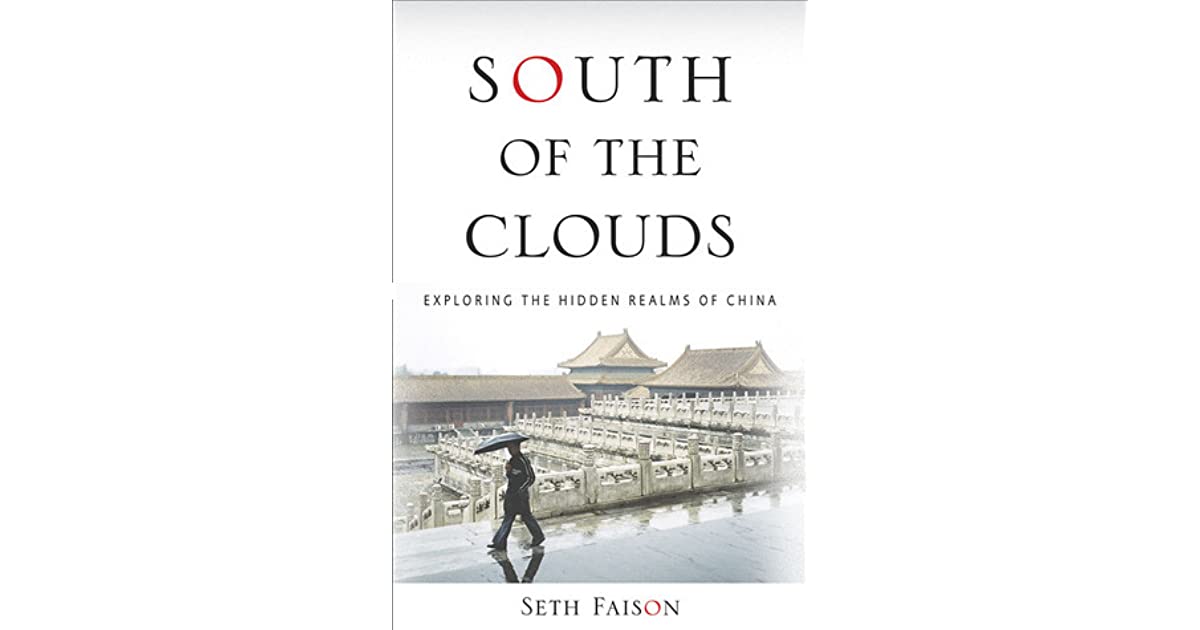
South of the Clouds, Exploring the Hidden Realms of China by former New York Times reporter Seth Faison is a balanced and interesting China expat memoir. Why? Because it includes the background to the stories he reported and also intimate details of his private life. He writes about edgy stuff like dating a transsexual woman and visiting dodgy massage parlours. He does this without coming off as a gratuitous lecher or a tiresome social justice warrior.
In 1984 he arrives in Xian, home of the Terracotta Warriors, to study Chinese. Faison describes a city of bicycles and poverty. He eats rice, boiled vegetables, and fat with traces of meat attached at the campus canteen filled with Mao-suit wearing students. He befriends the woman serving the food with some thoughts of romance. She hardly sounds glamorous in her dirty smock. This is Faison’s period of innocence. Everything is new and interesting as he takes his first steps in learning the language. Most Chinese women seem afraid of him and when he dates a Westernised girl, she disappears on him, and marries a rich man in Beijing to realize her dream of studying in America. Faison learns much happens in China below the surface and is not directly spoken of. This inspires his career:
“I became a journalist and used my calling card to peek into the mysteries of Chinese politics, the netherworld of underground business, and remote areas of the vast countryside. Uncovering secrets became my domain.”
One of these mysteries concerns poor farmer Yang who discovered the buried Terracotta Warriors. Faison wants to interview Yang, but finds there are two men claiming to be Yang – both making money off their reputation by signing coffee-table books. He has to interview both to find the real Yang.
After Xian, Faison moves to Hong Kong where he gets his start as a journalist at ‘The Standard.’ In the job ‘interview’ he proves himself by going beer for beer with the crusty British editor. He fights his way up from the bottom of the industry and ends up in Beijing with the ‘South China Morning Post.’ The chapters about the Beijing Spring of 1989 and the Tiananmen Square Massacre are readable but don’t include anything not well-covered in other books.
The chapters on the less famous stories are more interesting… The Golden Venture was a ship that got stuck on a sandbar just off the coast of New York in 1993. Inside, were hundreds of Chinese hoping to enter the US illegally. Ten died from either hypothermia or drowning. The conditions on the boat were terrible and Faison goes to Chinatown in Manhattan to investigate. Back to the States and with a job at the ‘New York Times’ the Golden Venture story draws him back to China. As the chief of the Shanghai Bureau for the Times, he travels to Fujian province where the unfortunate Golden Venture passengers came from.
“A mysterious region of craggy mountains and a rocky coast, Fujian sent millions of immigrants to America. For reasons no one could pin down, more than ninety percent of smuggled men and women came from one small area of Fujian, three counties near the provincial capital of Fuzhou.”
In Fujian they believe in the American dream and are willing to pay $30,000 to people smugglers and send their sons and daughters on a terrible, dangerous journey. Faison interviews relatives of young people smuggled to America and wonders whether this will cause them trouble with the local mafia.
One of the best chapters, Into the Pirate’s Den, is about a businessman involved in pirating DVDs.
“He had greased-back hair and the puffy face of a man who lived on cigarettes and alcohol.”
Faison writes a newspaper story about this character, Wang, who sees nothing wrong with intellectual property theft. Wang then calls Faison, wanting him to set the record straight in a new article because the one he’s published has got Wang in hot water with the authorities. Faison is very conflicted.
“Besides, Wang’s crimes were similar to those of hundreds of other Chinese businessmen. The main reason Wang was punished was that he made the mistake of talking to me. I felt bad. If I had more guts, I would have warned Wang during our interview and I disagreed with his assessment of pirating and that my article would reflect it. Face to face, I was afraid to be direct. I preferred the Chinese way, to up the appearance of friendliness and to stick the knife once I was out of sight.”
In Beijing, Faison has a relationship with Jin Xing, a famous dancer and transsexual. I doubt Faison would’ve dated a transsexual back in America so why did he do it in China? Well, as an outsider it’s easier to date another outsider. Living in China when you don’t look Chinese is a constant struggle against what Satre called bad faith. It’s hard not to lose your own identity. It’s easier to go with the flow and play the role of the funny foreigner. In Jin Xing, however, Faison finds a Chinese person who can see him as Seth Faison rather than just Johnnie Foreigner:
“I felt she could see me as a person, not as an American or as a reporter. I felt accepted by her.”
Satre’s waiter is the classical example of the bad faith scenario, where one plays a role the world assigns you in abandonment of your real self. The following is from a Psychology Today article written by Neel Burton.
“One example of bad faith that Sartre gives is that of a waiter who does his best to conform to everything that a waiter should be. For Sartre, the waiter’s exaggerated behaviour is evidence that he is play-acting at being a waiter, an automaton whose essence is to be a waiter. However, in order to play-act at being a waiter, the waiter must at some level be aware that he is not in fact a waiter, but a conscious human being who is deceiving himself that he is a waiter.”
It’s easy to quit being a waiter but to stop being a laowai you have to leave China altogether. The role is overwhelming, full-time. Only in your apartment can you become you again. Outside you are, crudely put – the entertaining Westerner who eats hamburgers, parties hard and puts their parents in a retirement home. Being laowai has (or had) its advantages, you are excused most eccentric behaviour. Some do enjoy the role. It’s an improvement of being Johnnie Nobody back home. But for a sensitive person like Faison, not being seen as who he is becomes a problem.
In general, Faison is successful with Chinese women. That he is not a very masculine type is no handicap in China, even an advantage. He also talks about his visits to dodgy massage parlours when lonely on the road. He feels guilty about this, and so should be congratulated for writing about it. I don’t know if there was any criticism of Faison from the PC crowd. His eventual wife encouraged him to write this book, so I don’t think she minded his admissions. It was because of the chapter on his massage addiction I heard of this book. I read an article in the LARB China Channel by Robert Hoyle Hunwick about sexpat writing, which, I thought unfairly, included South of the Clouds. After reading the article, I bought Faison’s book online and read the massage parlour chapter. Then I didn’t bother with the rest of the book until about a year later. I’m glad that I did come back to it.
The title “South of the Clouds” refers to Yunnan, the Southwestern Province with a mild climate and a lot of minority cultures. A place Faison visited before moving on to find a spiritual awakening amongst the Tibetans. He recounts seeing a Tibetan sky burial where a body is hacked up and left for the vultures. Instead of being horrified he finds some peace in witnessing this.
Faison realises it’s time to leave China in the early 2000s. He sees a lovely woman reporting on CNN and decides he has to meet her. That woman, Siobhan Darrow, became his wife.
Faison does a good job of analysing the doubts working as a journalist and being a foreigner in China can create. Westerners who have lived in China will encounter familiar complicated feelings about their experience well articulated here. Faison was in China in the 80s and 90s: the less hyped decades between the horrors of the Cultural Revolution and China becoming a huge player on the world stage. This book gives a good picture of those times, but will probably never be widely read, which is a shame. Seth Faison has not written any other books. I add him to a long list of journalists who have published one book – and that book is about China.
